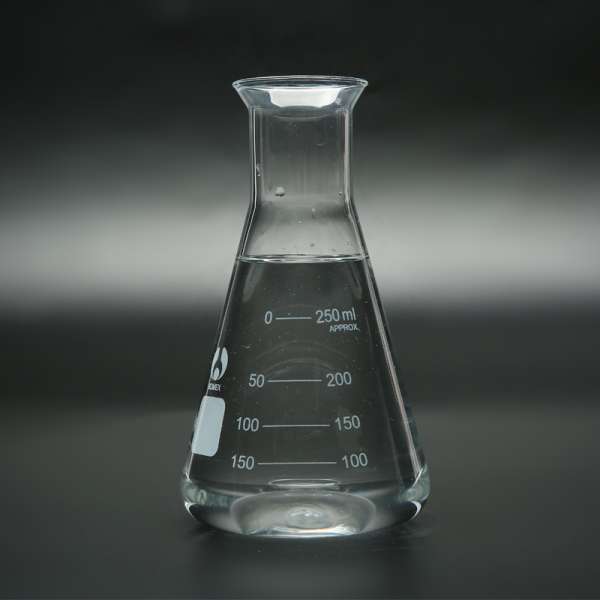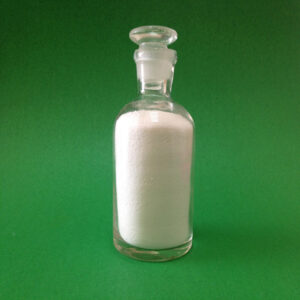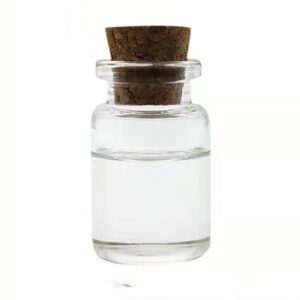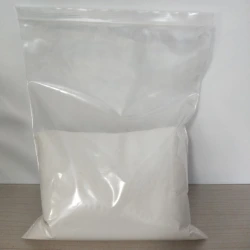Factory supply 3-Butyn-1-ol solution/ CAS:927-74-2/ wholesale price.
Buy 3-Butyn-1-ol solution (CAS 927-74-2). Factory supply 3-Butyn-1-ol solution/ CAS:927-74-2/ wholesale price. 2-Methylbut-3-yn-2-ol is the organic compound with the formula HC2C(OH)Me2 (Me = CH3). A colorless liquid, it is classified as an alkynyl alcohol.
3-Butyn-1-ol solution factory suppliers
It arises from the condensation of acetylene and acetone. The addition can be promoted with base or with Lewis acid catalysts. is produced on an industrial scale as a precursor to terpenes and terpenoids. Buy 3-Butyn-1-ol solution (CAS 927-74-2)
3-Butyn-1-ol for sale wholesale
2-Methylbut-3-yn-2-ol also is used as a monoprotected version of acetylene. For example, after arylation at carbon, the acetone can be removed with base: Buy 3-Butyn-1-ol solution (CAS 927-74-2)
- HC2C(OH)Me2 + ArX + base → ArC2C(OH)Me2 + [Hbase]X
- ArC2C(OH)Me2 → ArC2H + OCMe2
In this regard, 2-methylbut-3-yn-2-ol is used similarly to trimethylsilylacetylene.
Keywords 3-Butyn-1-ol for sale
Quick Details 3-Butyn-1-ol for sale
- ProName: 3-Butyn-1-ol
- CasNo: 927-74-2
- Molecular Formula: C4H6O
- Appearance: colorless or slightly yellow transparent
- Application: Pharma Intermediate
- DeliveryTime: Within 2 weeks after order confirmation
- PackAge: 3-Butyn-1-Ol is normally packed in 15…
- Port:china
- ProductionCapacity: 10000 Metric Ton/Year
- Purity: ≥98.5%
- Storage: Store in cool and dry place, away from…
- Transportation: By sea
- LimitNum: 5 Metric Ton
- CAS: 927-74-2
- MF: C4H6O
- Buy 3-Butyn-1-ol solution (CAS 927-74-2)
| 3-BUTYN-1-OL |
| PRODUCT IDENTIFICATION |
| CAS NO. |
927-74-2 |
|
| EINECS NO. |
213-161-9 |
| FORMULA |
HC��CCH2CH2OH |
| MOL WT. |
70.09 |
| H.S. CODE |
2905.29.9000 |
| UN NO. |
1986 |
| SYNONYMS |
3-Butynol; 3-Butynyl alcohol; 4-Hydroxy-1-butyne; But-3-yn-1-ol; |
| 1-Butyn-4-ol; 2-Hydroxyethylacetylene; |
| SMILES |
C(C#C)CO |
| CLASSIFICATION |
Alkyne, Acetylenic alcohol, Propargylic alcohol. |
| PHYSICAL AND CHEMICAL PROPERTIES |
| PHYSICAL STATE |
clear liquid |
| MELTING POINT |
< -63 C |
| BOILING POINT |
128 – 129 C |
| SPECIFIC GRAVITY |
0.926 |
| SOLUBILITY IN WATER |
Soluble |
| SOLVENT SOLUBILITY |
Soluble in alcohols and organic solvents. Immiscible with aliphatic hydrocarbon solvents. |
| pH |
|
| VAPOR DENSITY |
2.4 |
| log Pow |
0.07(Octanol-water) |
| HENRY LAW CONSTANT |
1.23E-11 (atm-m3/mole at 25 C) |
| NFPA RATINGS |
Health: 2; Flammability: 3; Reactivity: 0 |
| REFRACTIVE INDEX |
|
| FLASH POINT |
36 C |
| STABILITY |
Stable under ordinary conditions. |
| GENERAL DESCRIPTION & EXTERNAL LINKS |
| Alkynyl substrate used in a study of a palladium-catalyzed coupling with -tetrionic acid bromide leading to alkynyl substituted furanones in good yield. Synthon for preparation of oxygen-containing heterocycles and protected esters of s-Hydroxy-L-isoleucine.
Acetylenic alcohol containing -OH and triple bond can be applicable to;
- Corrosion inhibitor formulation
- Metal complex solution
- Solvent stabilizer
- Biodegradable chemical intermediate to make pesticides, biocides and pharmaceuticals.
- Acetylene chemistry and reagents
Alkynes contain a highly versatile functional group that may be utilized for numerous reactions such as electrophilic additions of hydrogen, halogens, hydrogen halides, or water; metathesis; hydroboration; oxidative cleavage; C-C coupling; and cycloadditions. Terminal alkynes may be transformed into metal acetylides and can then be submitted to nucleophilic substitution with alkyl halides, forming new C-C bonds, or nucleophilic addition, e.g., the Favorskii reaction.
Material Safety Data Sheet
Google Scholar Search |
| SALES SPECIFICATION |
| APPEARANCE |
clear liquid |
| CONTENT |
98.0% min |
| WATER |
0.5% max |
| COLOR, APHA |
20 max |
| TRANSPORTATION |
| PACKING |
|
| HAZARD CLASS |
3 (Packing Group: II) |
| UN NO. |
1987 |
| OTHER INFORMATION |
| Hazard Symbols: XI, Risk Phrases: 10-36/37/38, Safety Phrases: 9-16-24/25-33 |
| GENERAL DESCRIPTION OF ALKYNE |
Alkynes are aliphatic hydrocarbons that have one or more carbon-carbon triple bonds. The general structure of the alkyne hydrocarbons with one triple bond is CnH2n-2. They are insoluble in water but easily soluble in common organic solvents of low polarity. The features of alkynes in chemical synthesis is due to the acidity of hydrogen atoms bonded to triply bonded carbons as well as the triple bonds themselves. Addition reactions are typical in alkyne reactions; halogenation, hydrogenation, hydrohalogenation, hydration, oxidative cleavage, nitrile formation and acidity of terminal alkynes. Polymerisation and substitution reactions are also useful in chemical synthesis.
- Addition Reactions
- Catalytic Hydrogenation by Pt and Pd hydrogenation catalysts to yeild alkanes without isolation of alkene intermediates.
- Catalytic Hydrogenation by Lindlar’s catalyst to yeild cis- or trans- alkenes without further reduction to alkanes
- Addition by Electrophilic Reagents
- Addition of halides (chlorine, bromine, iodine) to yield dihalogen substituted alkanes at the solid bond site
- Addition of hydrogen halides (HCl, HBr, HI) to yield monohalogen substituted alkenes or dihalogen substituted alkanes
- Hydration of alkynes to yield ketone products through enol tautomer intermediate stage, whereas the hydration of solid bonds gives alcohol products (exceptionally acetylene yields acetaldehyde ).
- Hydroboration by disiamylborane to yield ketones or aldehydes
- Oxidation cleavages of the triple-bond to give carboxylic acid products with oxidizing agents (potassium permanganate and ozone)
- Nucleophilile Addition by sp-hybrid carbon atoms of the triple-bond render alkynes (nitrile formation)
- Nucleophilile Reduction by solutions of sodium in liquid ammonia to trans-alkenes
The name of all alkynes end in “-yne” adding a prefix to indicate the location of the triple bond in the molecule.
| COMPOUND |
SYNONYM |
FORMULA |
CAS RN |
M.P (C) |
B.P (C) |
| Ethyne |
Acetylene |
C2H2 |
74-86-2 |
-84.0 |
-28 |
| Propyne |
Methyl acetylene |
C3H4 |
74-99-7 |
-103 |
-23 |
| 1,3-Butadiyne |
Diacetylene |
C4H2 |
460-12-8 |
|
10 |
| 1-Butyne |
Ethyl acetylene |
C4H6 |
107-00-6 |
-125.7 |
8 |
| 2-Butyne |
Crotonylene |
C4H6 |
503-17-3 |
-32.2 |
27 |
| 1,3-Pentadiyne |
|
C5H4 |
4911-55-1 |
|
|
| 3-Penten-1-yne |
Propenyl acetylene |
C5H6 |
2206-23-7 |
|
|
| 2-Methyl-1-buten-3-yne |
Isopropenyl acetylene |
C5H6 |
78-80-8 |
-113 |
32 |
| 1-Penten-3-yne |
Methyl vinyl acetylene |
C5H6 |
646-05-9 |
|
|
| 1-Penten-4-yne |
Allyl acetylene |
C5H6 |
871-28-3 |
|
|
| 2-Pentyne |
Ethyl methyl acetylene |
C5H8 |
627-21-4 |
-109 |
56 |
| 3-Methyl-1-butyne |
Isopropyl acetylene |
C5H8 |
598-23-2 |
-89.7 |
26 |
| 1-Pentyne |
Propyl acetylene |
C5H8 |
627-19-0 |
-106 |
40 |
| 3-Hexyne |
Diethyl acetylene |
C6H10 |
928-49-4 |
-103 |
81 |
| 2-Hexyne |
Methyl propyl acetylene |
C6H10 |
764-35-2 |
-89.1 |
84 |
| 4-Methyl-1-pentyne |
Isobutyl acetylene |
C6H10 |
7154-75-8 |
-105 |
61 |
| 1-Hexyne |
Butyl acetylene |
C6H10 |
693-02-7 |
-131.9 |
71 |
| 3-Methyl-1-pentyne |
sec-Butyl acetylene |
C6H10 |
922-59-8 |
|
58 |
| 4-Methyl-2-pentyne |
Isopropyl methyl acetylene |
C6H10 |
21020-27-9 |
-110 |
73 |
| 3,3-Dimethyl-1-butyne |
tert-Butyl acetylene |
C6H10 |
917-92-0 |
-78.2 |
38 |
| 1,5-Hexadiyne |
Dipropargyl |
C6H6 |
628-16-0 |
-6 |
86 |
| 1,4-Hexadiyne |
|
C6H6 |
10420-91-4 |
|
79 |
| 1,5-Hexadien-3-yne |
Divinyl acetylene |
C6H6 |
821-08-9 |
|
|
| 1-Hexen-3-yne |
Ethyl vinyl acetylene |
C6H8 |
13721-54-5 |
|
84 |
| 4-Methyl-2-hexyne |
sec-Butyl methyl acetylene |
C7H12 |
20198-49-6 |
-108 |
100 |
| 2-Methyl-3-hexyne |
Isopropyl ethyl acetylene |
C7H12 |
|
-117 |
95 |
| 5-Methyl-2-hexyne |
Isobutyl methyl acetylene |
C7H12 |
53566-37-3 |
-93 |
102 |
| 3-Ethyl-1-pentyne |
|
C7H12 |
|
|
84 |
| 1-Heptyne |
n-Pentyl acetylene |
C7H12 |
628-71-7 |
-81 |
100 |
| 4,4-Dimethyl-2-pentyne |
tert-Butyl methyl acetylene |
C7H12 |
999-78-0 |
|
83 |
| 3-Heptyne |
Ethyl propyl acetylene |
C7H12 |
2586-89-2 |
-131 |
107 |
| 4,4-Dimethyl-1-pentyne |
Neopentyl acetylene |
C7H12 |
|
-75 |
78 |
| 2-Heptyne |
n-Butyl methyl acetylene |
C7H12 |
1119-65-9 |
|
112 |
| 1,6-Heptadiyne |
|
C7H8 |
2396-63-6 |
|
108 |
| 1,7-Octadiyne |
|
C8H10 |
871-84-1 |
|
135 |
| 2,6-Octadiyne |
|
C8H10 |
764-73-8 |
|
|
| Cyclooctyne |
|
C8H12 |
1781-78-8 |
|
|
| 4-Octyne |
Dipropyl acetylene |
C8H14 |
1942-45-6 |
-102.5 |
132 |
| 1-Octyne |
n-Hexyl acetylene |
C8H14 |
629-05-0 |
-79.3 |
126 |
| 3-Octyne |
n-Butyl ethyl acetylene |
C8H14 |
15232-76-5 |
-104 |
133 |
| 2-Octyne |
n-Pentyl methyl acetylene |
C8H14 |
2809-67-8 |
-61.6 |
138 |
| 1,8-Nonadiyne |
|
C9H12 |
2396-65-8 |
-21 |
|
| Cyclononyne |
|
C9H14 |
6573-52-0 |
|
|
| 1-Nonyne |
n-Heptyl acetylene |
C9H16 |
3452-09-3 |
-50 |
151 |
| 3-Nonyne |
Methyl n-pentyl acetylene |
C9H16 |
20184-89-8 |
|
157 |
| 2-Nonyne |
n-Hexyl methyl acetylene |
C9H16 |
19447-29-1 |
|
162 |
| 4-Nonyne |
n-Butyl propyl acetylene |
C9H16 |
20184-91-2 |
|
|
| Cyclodecyne |
|
C10H16 |
3022-41-1 |
|
|
| 5-Decyne |
Di-n-butyl acetylene |
C10H18 |
1942-46-7 |
-73 |
|
| 3-Decyne |
Ethyl n-hexyl acetylene |
C10H18 |
2384-85-2 |
|
179 |
| 1-Decyne |
n-Octyl acetylene |
C10H18 |
764-93-2 |
-44 |
174 |
| 2,2,5,5-Tetramethyl-3-hexyne |
Di-tert-butyl acetylene |
C10H18 |
17530-24-4 |
|
|
| 1-Undecyne |
n-Nonyl acetylene |
C11H20 |
2243-98-3 |
-25 |
195 |
| 6-Dodecyne |
Di-n-pentyl acetylene |
C12H22 |
6975-99-1 |
|
|
| 1-Dodecyne |
n-Decyl acetylene |
C12H22 |
765-03-7 |
-19 |
225 |
| 1-Tridecyne |
n-Undecyl acetylene |
C13H24 |
26186-02-7 |
-5 |
234 |
| 1-Tetradecyne |
n-Dodecyl acetylene |
C14H26 |
765-10-6 |
|
252 |
| 1-Pentadecyne |
n-Tridecyl acetylene |
C15H28 |
765-13-9 |
10 |
269 |
| 1-Hexadecyne |
n-Tetradecyl acetylene |
C16H30 |
629-74-3 |
25 |
285 |
| 1-Heptadecyne |
n-Pentadecyl acetylene |
C17H32 |
26186-00-5 |
22 |
300 |
| 1-Heptadecyne |
n-Pentadecyl acetylene |
C17H32 |
26186-00-5 |
22 |
300 |
| 2-Octadecyne |
|
C18H34 |
|
|
325 |
| 1-Octadecyne |
|
C18H34 |
629-89-0 |
|
|
| 1-Nonadecyne |
|
C19H36 |
|
33 |
329 |
| 1-Eicosyne |
1-Icosyne |
C20H38 |
|
36 |
342 |
|






Reviews
There are no reviews yet.